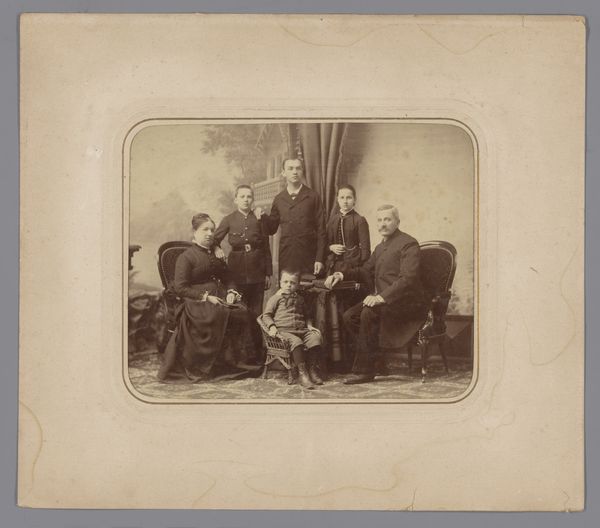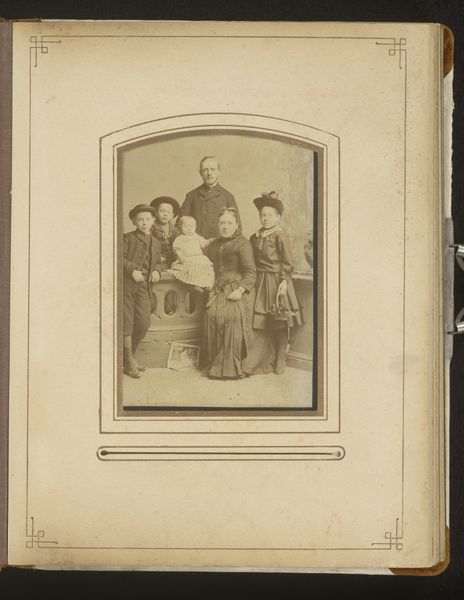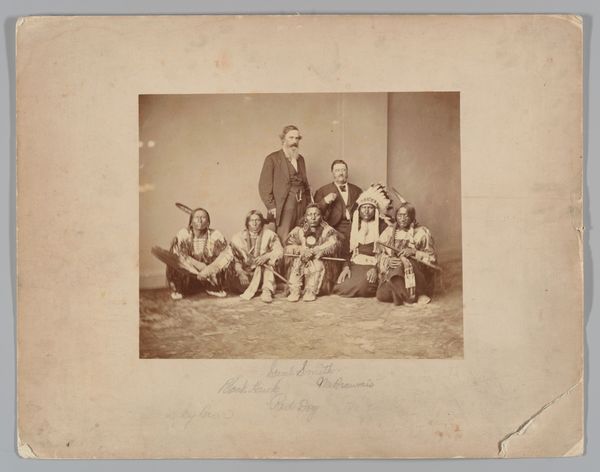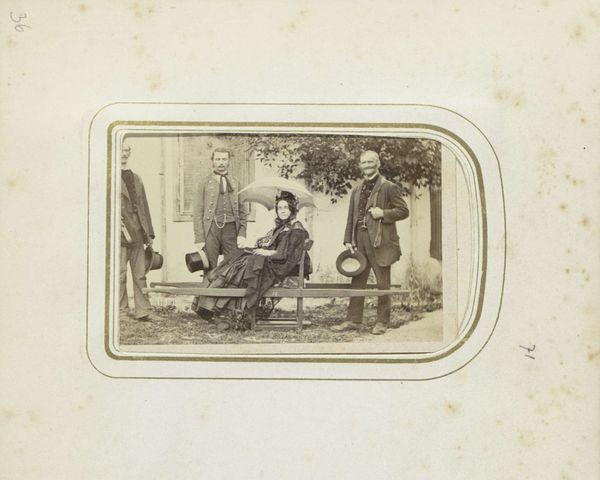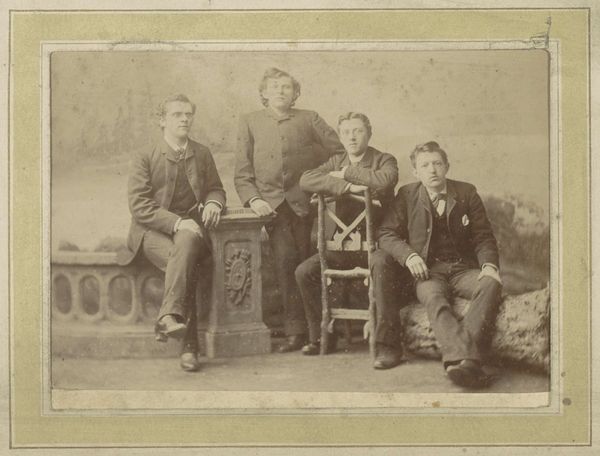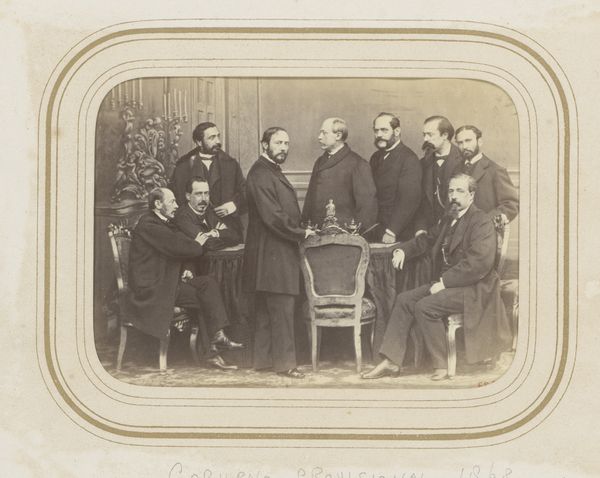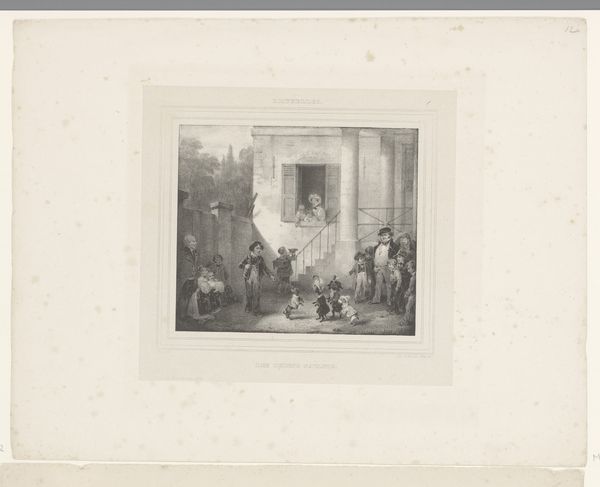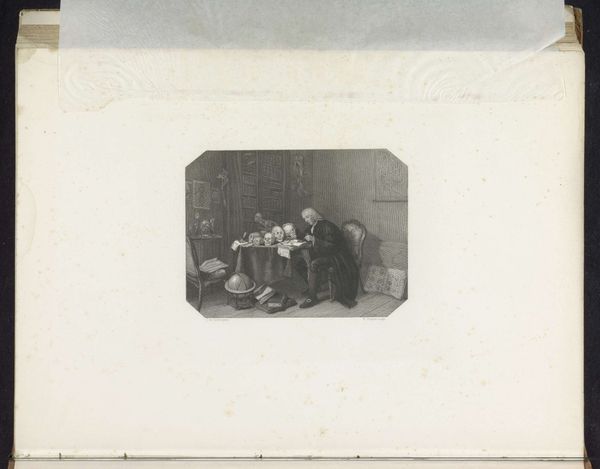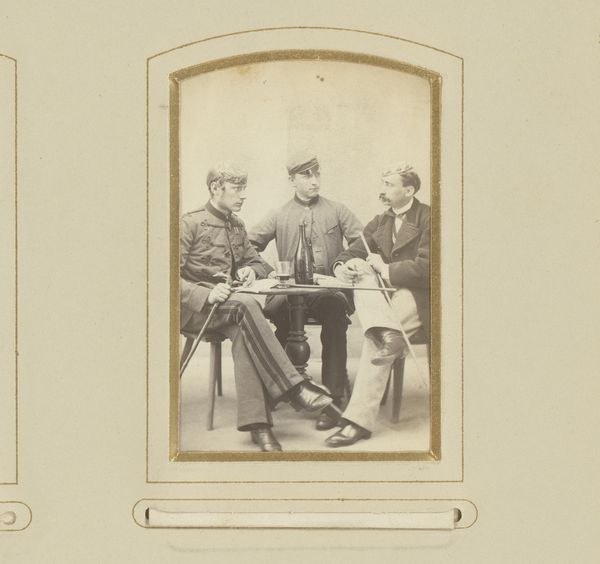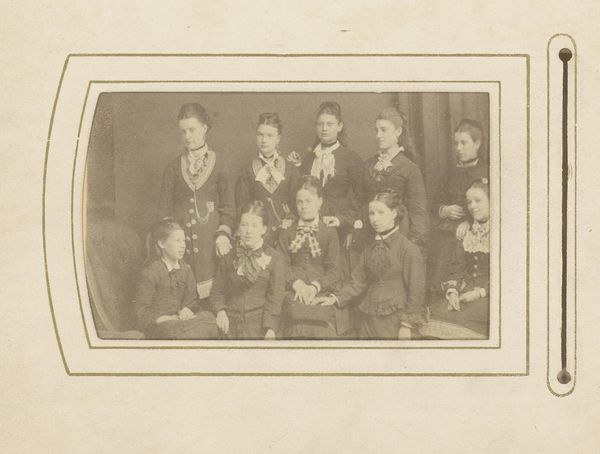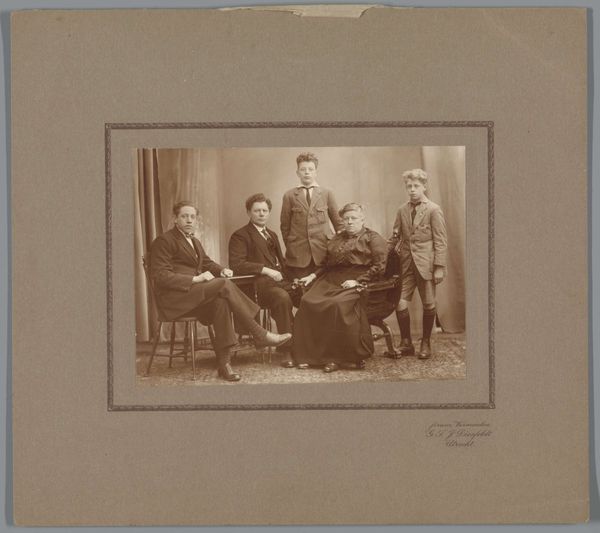
Groepsportret van zeven onbekende jongens, mogelijk broers c. 1880 - 1890
0:00
0:00
bernardusbruining
Rijksmuseum
photography
#
portrait
#
photography
#
group-portraits
#
genre-painting
Dimensions: height 103 mm, width 64 mm
Copyright: Rijks Museum: Open Domain
Editor: Here we have an albumen print from somewhere between 1880 and 1890, titled "Groepsportret van zeven onbekende jongens, mogelijk broers," or "Group portrait of seven unknown boys, possibly brothers." The boys appear solemn, formally arranged around a table and chairs. What stands out to you when you look at it? Curator: The photograph resonates with the anxieties surrounding masculinity and social mobility in the late 19th century. We see a spectrum of ages, perhaps reflecting different stages of male development within a family striving for upward mobility. Their somber expressions, rigid posture…are these boys being trained to perform a certain version of masculinity for the camera and, more importantly, for society? How might photography itself have played a role in shaping these identities? Editor: That’s an interesting point about photography’s role. Do you think the staging is deliberate, almost like a performance of status? Curator: Precisely! Notice how the composition emphasizes hierarchy: the standing figure, the arrangement around objects denoting wealth. Photography was democratizing image-making, yet portraiture still served to reinforce social structures. The clothing they wear are also key in interpreting how they wish to be viewed. I would argue this is more than just a record; it’s an assertion of belonging and aspiration within a specific historical context. This photo makes you wonder about each person's inner hopes and struggles! Editor: I never would have considered the image from that viewpoint! Now that I see the photograph that way, I feel a deeper appreciation for what's behind its visual elements. Thanks for this insight! Curator: My pleasure. Thinking about art with the wider cultural context and contemporary theory allows us to examine our cultural identities in modern-day.
Comments
No comments
Be the first to comment and join the conversation on the ultimate creative platform.
